Welcome back, and thanks for stopping by the farm! We get asked so many questions, so we thought it would be fun to put together a Q & A for this edition, so find a comfy spot, and read on!
1.) How old is your house?
Our home was built circa 1790- Mozart was still composing, Beethoven hadn’t started, and George Washington had just become president the year prior. The Revolutionary War was just ending, the U.S. dollar did not yet exist, and New Hampshire had just become a state.
2.) Who built your house?
Daniel Warren Jr. and his wife Abigail. Daniel was born in Westborough, MA on June 17, 1752. He was a fifth generation settler, as his great-grandfather came from Suffolk, England in 1630 (just ten years after the Mayflower). Daniel and Abigail married on May 18, 1775, just five days after Daniel’s enlistment with the Selectmen of Waltham, MA, and a month before he fought at the Battle of Bunker Hill. Daniel was a Minuteman- answering the Lexington Alarm (Paul Revere’s ride) on April 19, 1775 at the opening of the Revolutionary War.
3.) How much land do you have?
The original homestead was about 175 acres, and contained (as far as we know) the house, the barn (which was across the road, and was about double its current size), and a large blacksmith shed. There was also a second home on the south end of the property which was leased/rented to the Gilchrest family. At some point after the 1830 census, this second home was split off to become its own property. Daniel and Abigail raised eight children in this home. Unfortunately, there are only 2.3 acres now remaining with the house.
4.) How many families have owned this home?
We are just the fifth family to call this house home. After the Warrens, the home was sold to William Davis, who then sold it to Moses Eaton Jr., who made a name for himself as an itinerant stencil artist before settling on this homestead, and a flax farmer afterward- weaving the finest linen around. The home then remained in his family for five generations. It was then sold along with 27 acres to another family, who divided the land, then sold it to us with just the 2.3 acres surrounding the house and barn.
5.) Is your house haunted?
There are no spooky “feelings” in this house. We know for certain that several people have passed within these walls, yet there has been nothing strange or unusual- perceived or actual. We think the house, along with whatever presence may remain within it, is happy we’re here.
6.) Have you found any interesting artifacts.
Sadly, there were virtually no artifacts of any kind that came with the house. Everything from its history has long been sold, kept with a family, or lost to time. We have the chain of ownership (names and dates) and a few stories to pass along, but that’s pretty much it. We have found a few old bottles and a couple of horseshoes in the yard, along with bits of metal “whatsits”. We’ve created a keepsake box that will stay with the house, and we’re adding whatever we can. We feel the house is so much bigger than us, or anyone who has lived here, so we want to preserve as much as we can. There are so few 18th century homes left standing, even less with their period barns, and even less with any of their original land. There is a real responsibility when purchasing/restoring an antique home- one that we do not take lightly. The preservation of this home and its story is far more important than us.
7.) What is the area around you like?
We live in a pretty remote part of southern New Hampshire. The nearest traffic light is eight miles away, and the nearest interstate is nearly an hour’s drive. There are three or four town centers within a few miles of us, but otherwise, it’s pretty rural- any big box stores are at least a half hour away. Regardless of where we’re going, there are at least two, three, or sometimes four ways to get anywhere, and they all take roughly the same length of time. Living here really forces you to slow down and look around. The roads are mostly two-lane asphalt, curvy and twisty, and occasionally will go through a small town center complete with a pub, town square, usually an old church or two, and some houses. We’re within 1-2 hours of pretty much anything we’d ever want to do. Boston is less than two hours away, as is the ocean. The White Mountains are a just a couple hours drive away. We can get to five or six states within an afternoon. The immediate area here is known as the Monadnock region, named for Mount Monadnock, which rises to 3165 feet above sea level, but 1000 feet higher than any surrounding peak. Monadnock is just a few miles south of us, and is the second-most climbed mountain in the world, and the most summited. Mount Fuji in Japan has more attempts, but fewer summits. The Wapack range is just to our east, and can be seen through the trees when the leaves are down. There are many lakes in the area, many fed by the countless rivers, brooks, and creeks that wind pretty much everywhere. This is a big hiking area, with hundreds of miles of trails within just a couple miles of our door. Mountain biking is also big here. The Monadnock region is also a big “foodie” area- farm-to-table is the norm around here. Most towns around us have small general stores, and most serve food that will put a lot of fancy restaurants to shame.
8.) Do you have experience remodeling/restoring homes, especially antiques?
While I have experience with light remodeling and construction, nothing like what we’ve taken on here. We rely on YouTube, advice from experienced folks we’ve met here, or just figuring it out. Our skills and confidence are growing with each project taken on, and we’re learning what tools bring us the best results. We’ve really tried to be as active as possible in this restoration, and have tried to do as much as we can. We love putting our hands where Daniel likely had his, bringing almost 230 years of time to a handshake, if you will. This house really speaks to us, and we feel it deserves to be loved and respected. We’ve been fortunate enough to have found contractors who understand and respect what we’re doing here for the things we’re unable to do.
9.) How do you decide what to work on?
Admittedly, this was a challenge when we first began the restoration, as everything was needed. We began by creating a space to work, and a space to relax- the ell workshop and the screen porch. After that, priorities were driven by water leaks, our comfort, or failing structure. In the sixteen months since we began, we’ve touched every surface of this home, including some that haven’t seen human hands in a century or more. With the siding of the house complete, we’re really moving into the “pretty” parts of the restoration. We still need to re-side the front side of the ell, and the front of the barn, and we still need to build some partitions/walls under the barn, but the major structure and preservation of the house is complete.
10.) What do you like to do when not working on the house?
We’re not sure, as we’re always working on the house 🙂 Seriously though, we like to hike, explore a good antique shop, or take one of our classic cars out for a drive to explore the area around us. We’ve found a number of nearby covered bridges and really cute little towns to explore. With the house project slowing down, we hope to get in more hiking and biking next summer.
Well, that answers most of the questions we’ve been asked by you folks, and we hope you found something interesting in the answers. Also, let us know if you have any other questions, and we can make a Q & A a regular part of our posts.
It’s been a busy fall here on the farm- we’ve wrapped up what we need to do outside for winter. The house re-siding is complete, as is the shed roof rebuilding. We’ve got plenty of firewood stacked up and ready. We are still working on weatherstripping the windows, but we should have that wrapped up in a couple of days. With the changing season, and shorter days, it’s been easy to transition to shorter working days for the most part. We’re looking forward to a quiet winter with some fires in the hearth, and books to be read.
Speaking of the shed roof rebuilding, remember when we rebuilt one side of the roof last year, but winter hit us before we could do the other? Well, we finally had a week to get to it. If you don’t remember, a very large tree limb broke off years ago, and crashed through the roof. Some town folks have told us that it stuck out of the roof for seven years afterwards, and if you look at Google Street View, you can still see it 🙂 We started by pulling the five layers of old roofing material off, so we could find all the leaks and rotted boards. Then we patched the sheathing boards, covered with tar paper, and new shingles. We’ll use the shed in its “carport” stage for the winter, then next year, we can finish by installing windows, a door, and sealing up the siding. We had amazing colors this fall, so while working on the shed roof, we were treated to nature in all its glory.
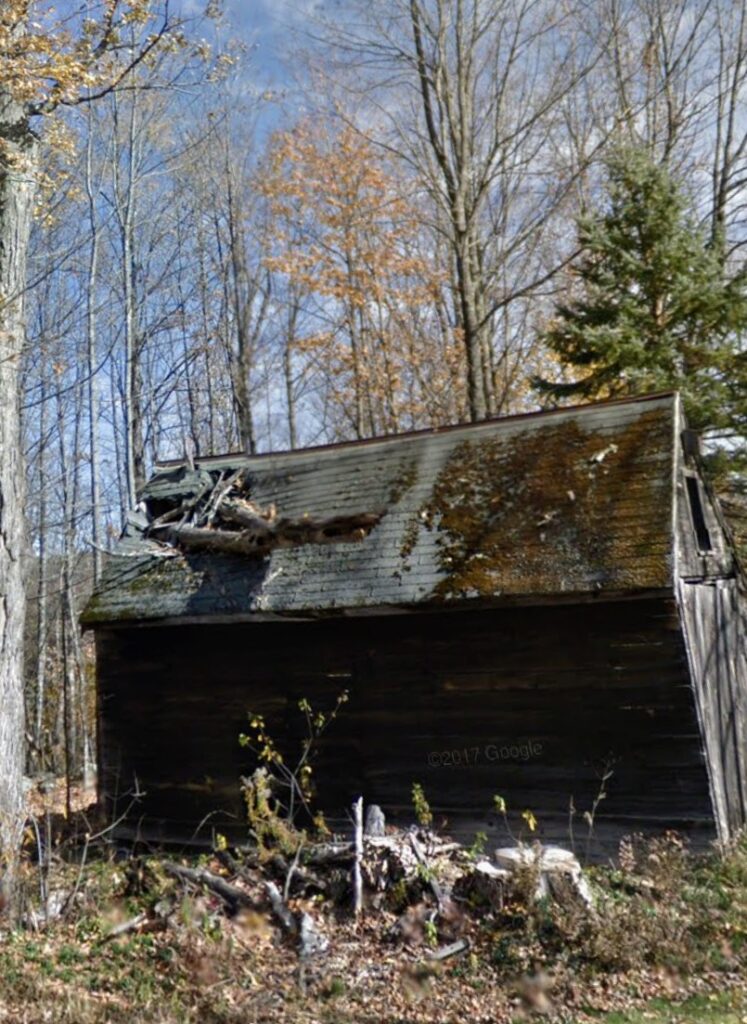
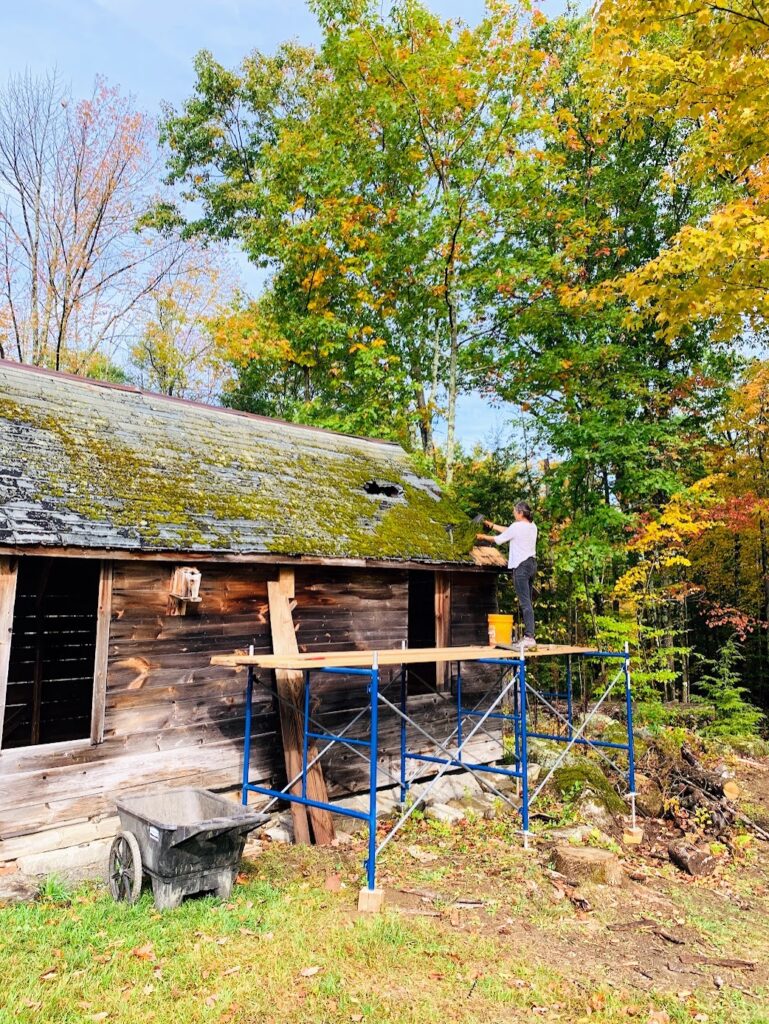
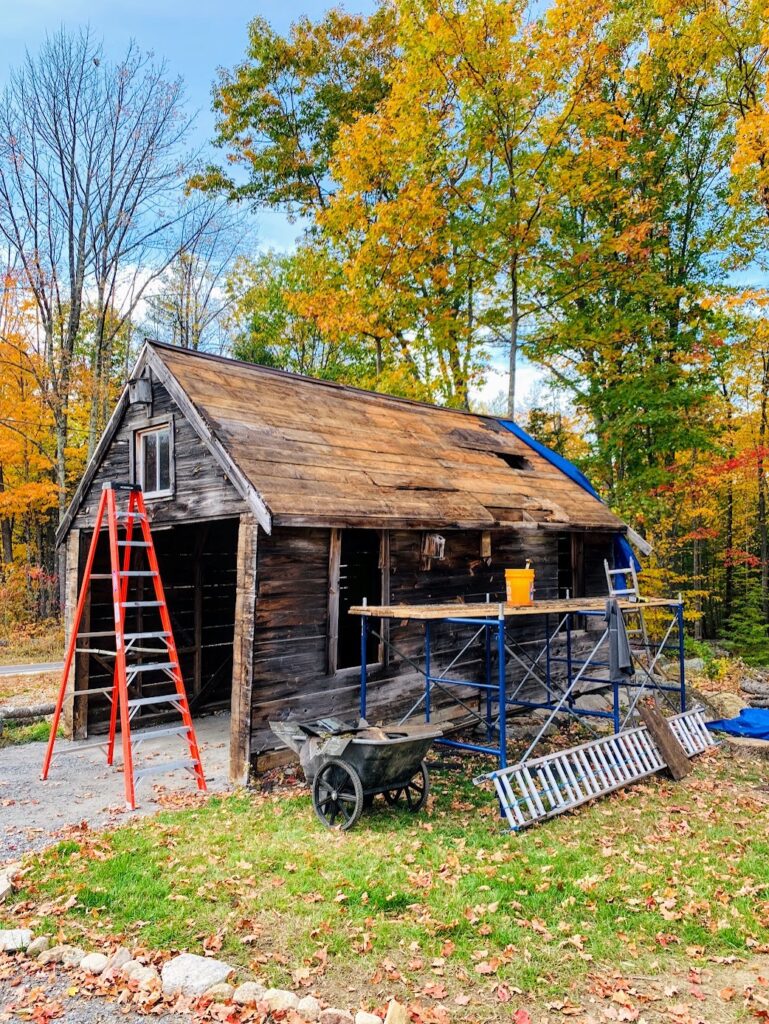

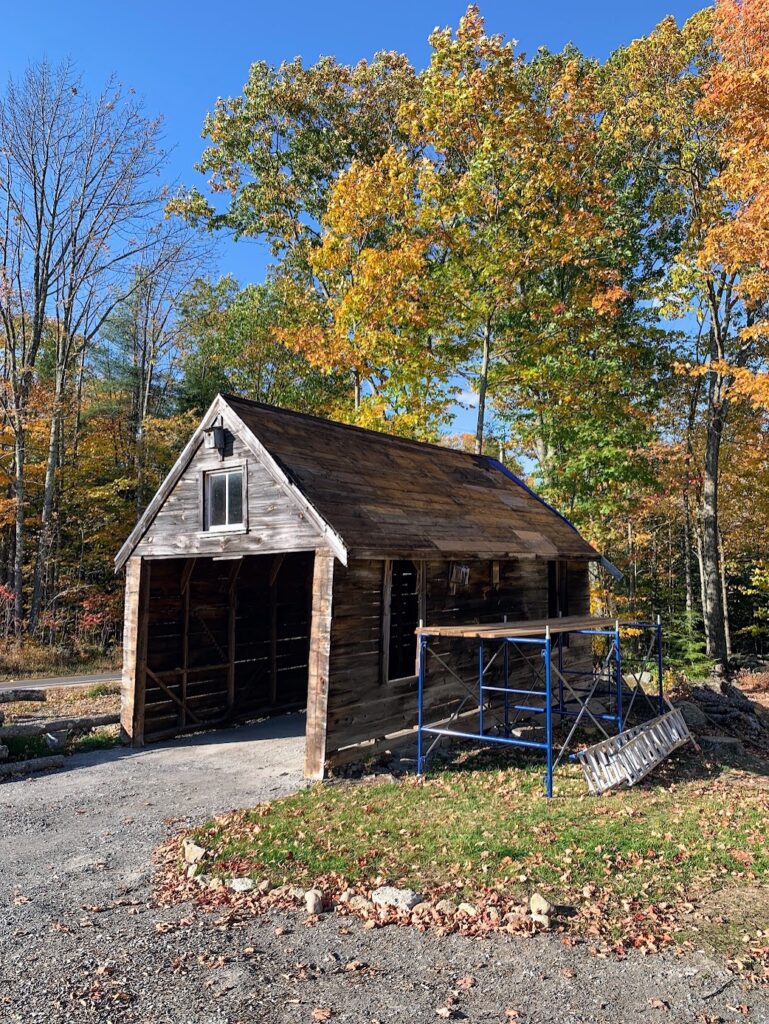
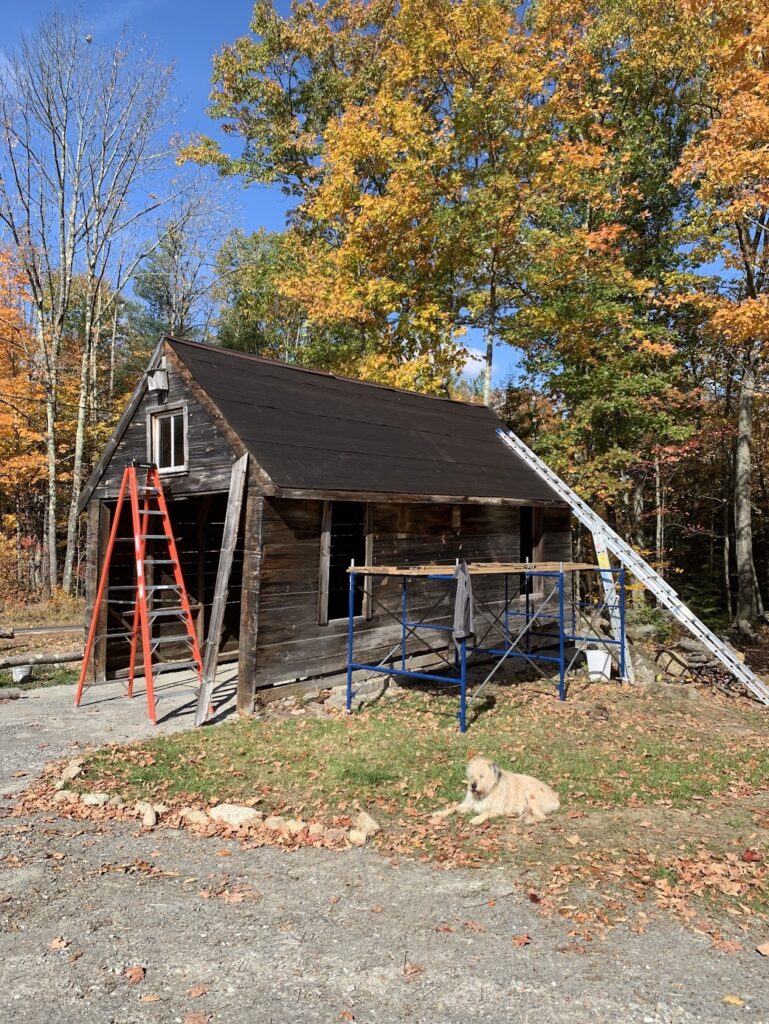

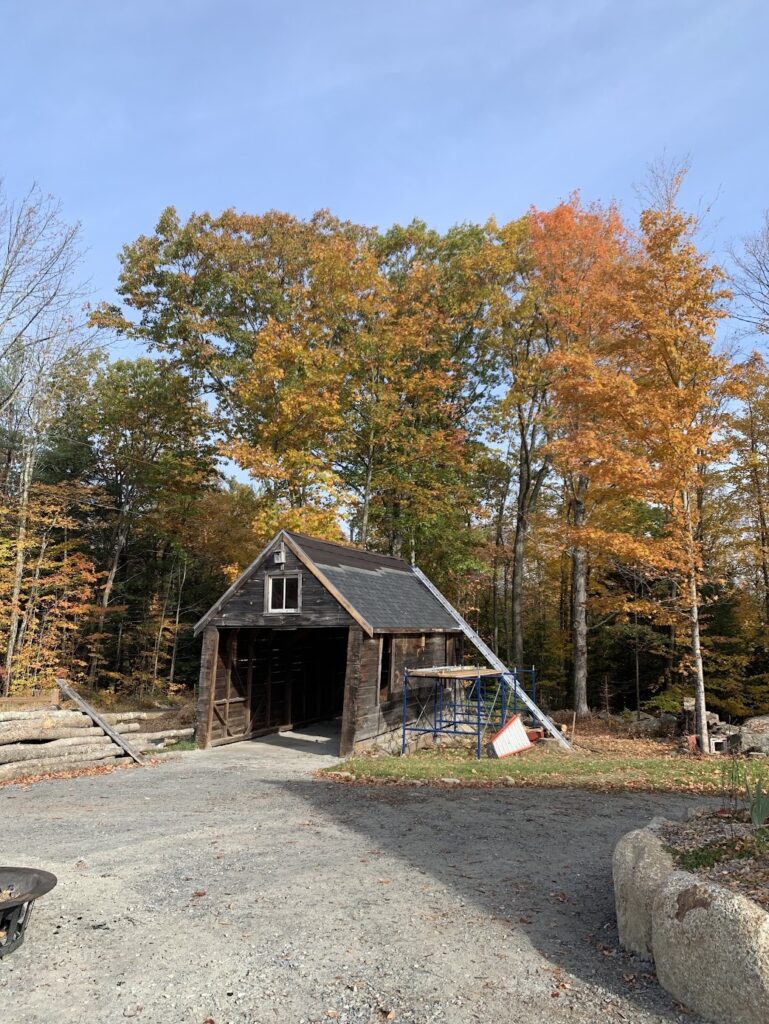
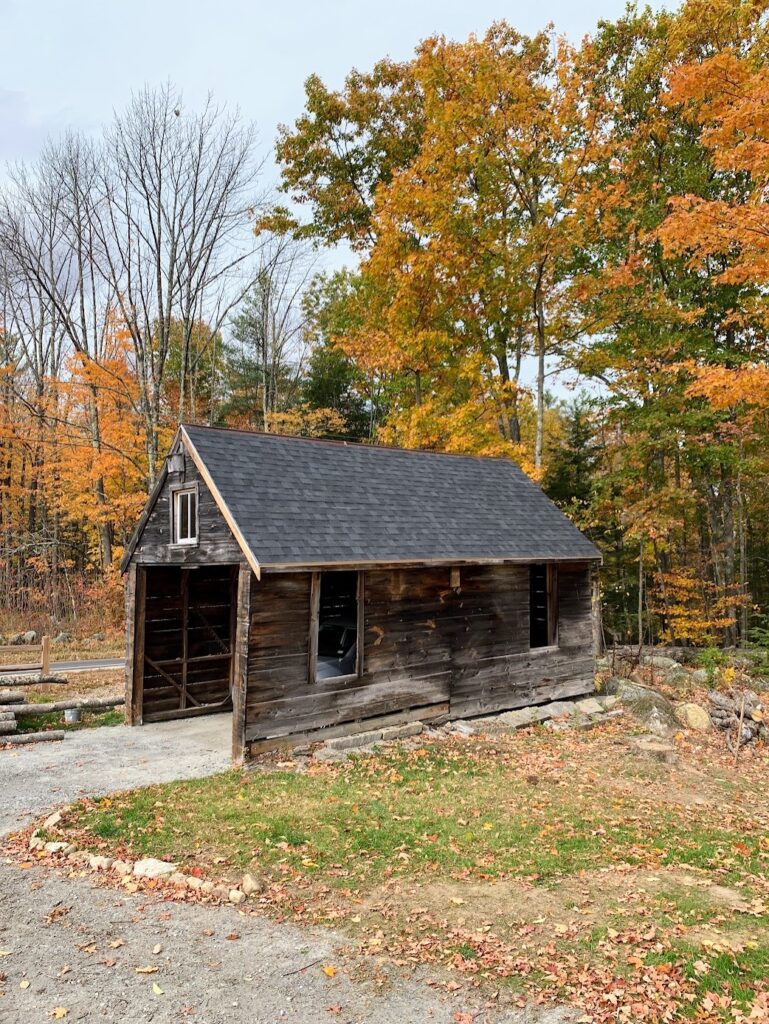
Another little project we tackled was replacing the rotted deck railing. This project was on next summer’s calendar, as we need to replace the deck boards, but while walking through our local builders supply store, we came across these railing kits, so we jumped in with both feet, and we couldn’t be happier with the results.



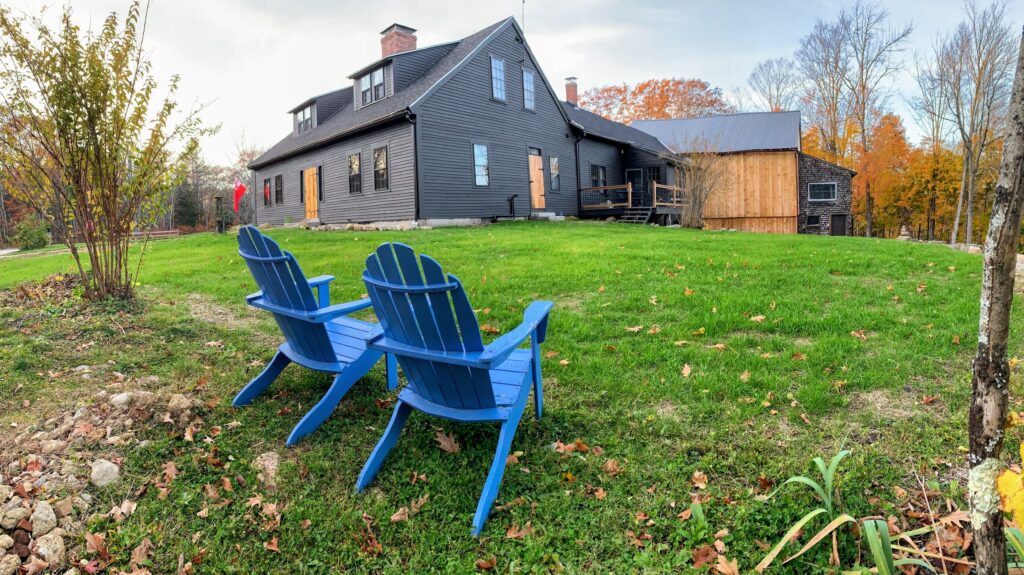
One thing Jenny is looking forward to this winter is weaving some linens on her new-to-her antique barn loom we picked up back in August. She’s finally had time to play around with it, and will be weaving pretty things before we know it.
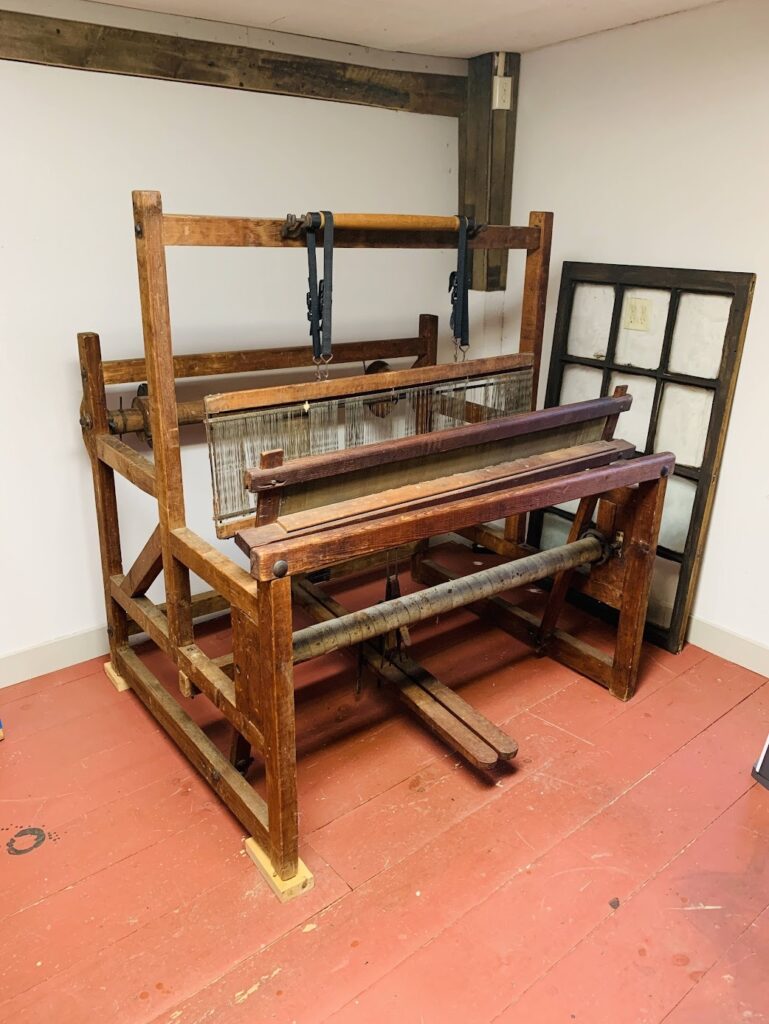
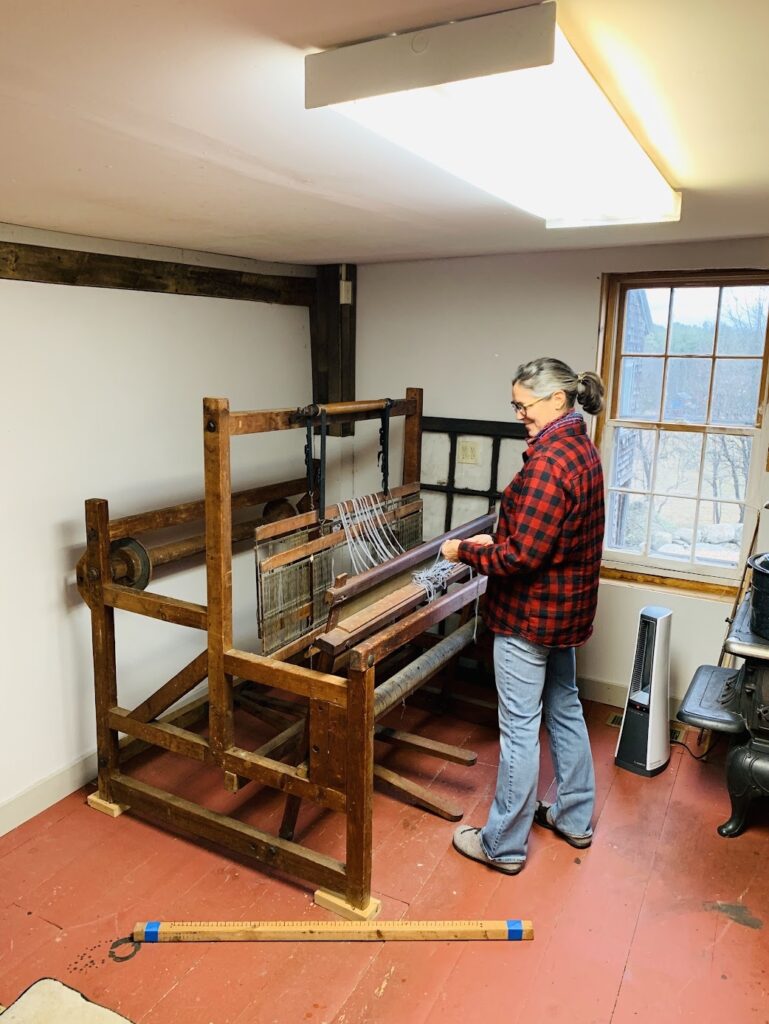
We’ve really been enjoying living in New England, with its slower pace, quiet, history, and time to enjoy it all. We’ve had a couple of visitors to the farm recently, so we’ve been doing a little more tourist-stuff than we normally do. We’ll leave you with some photos of these visits, and some of the spectacular fall color we enjoyed this year.



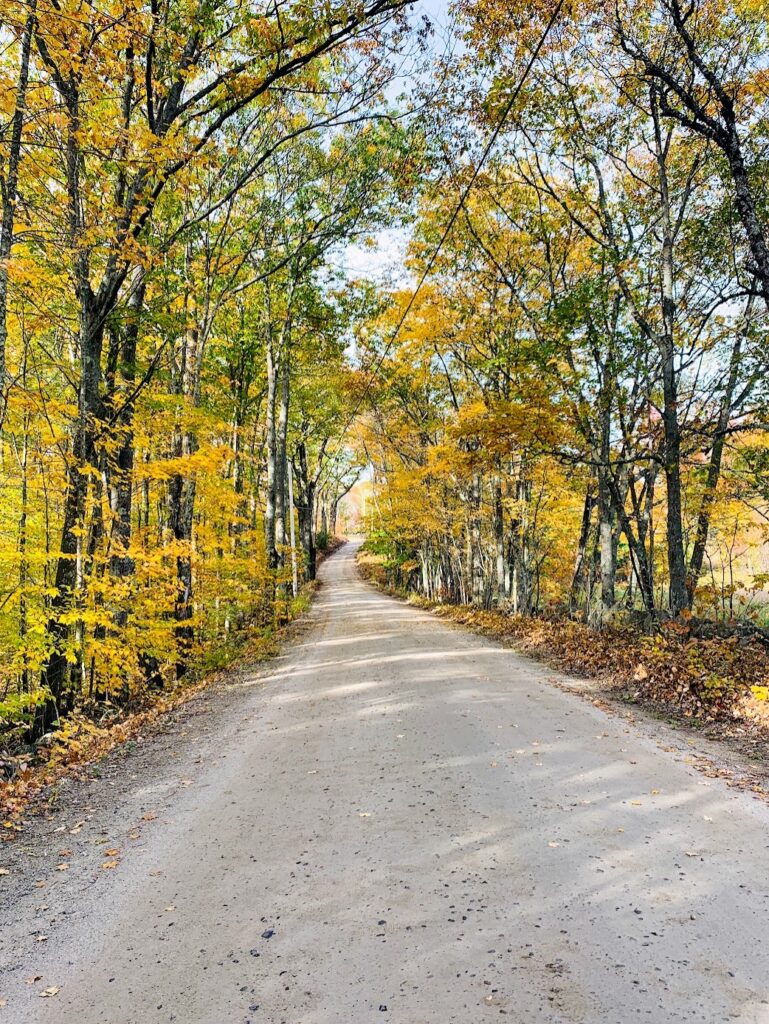
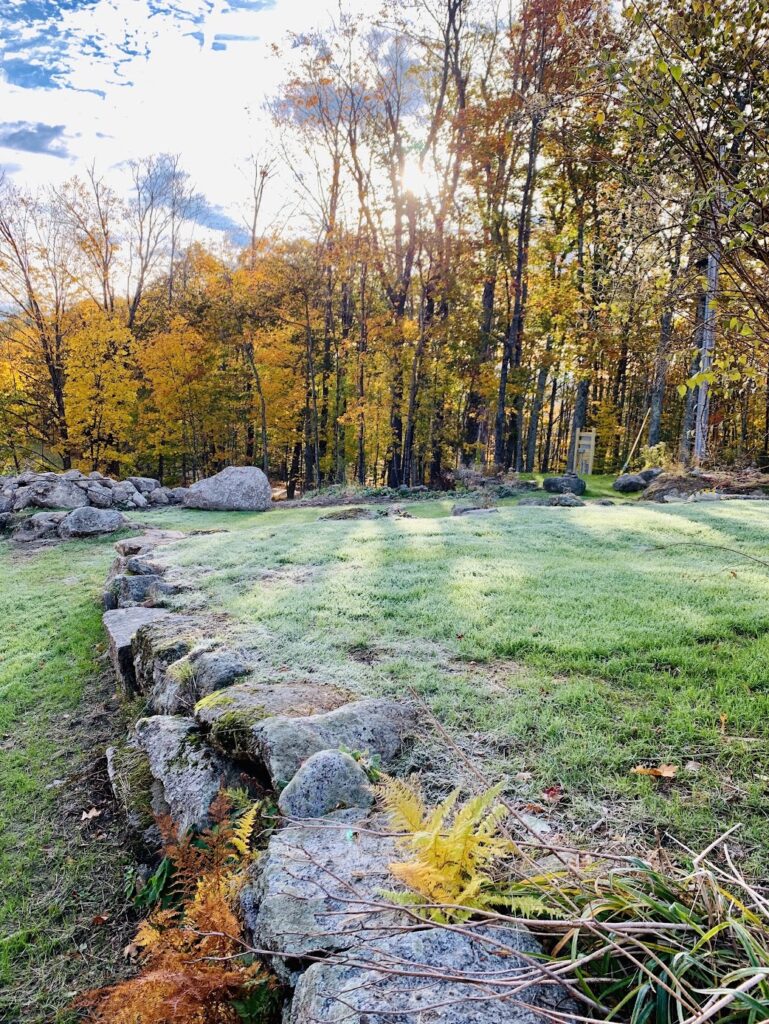
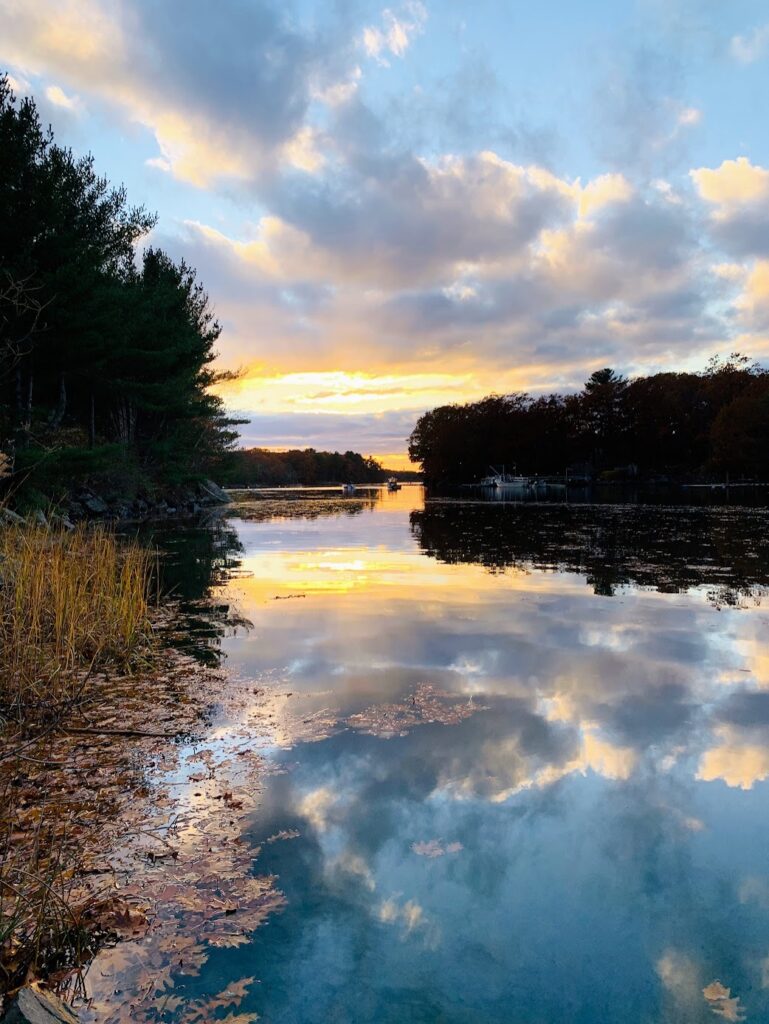

Thanks for stopping by! We hope you come back soon- wishing you all a healthy and happy upcoming holiday season- God bless!

Leave a Reply